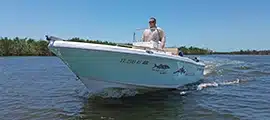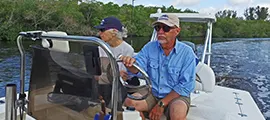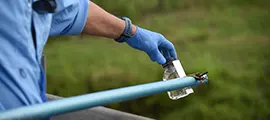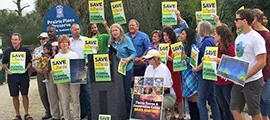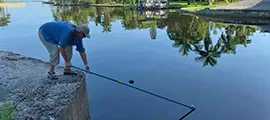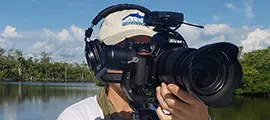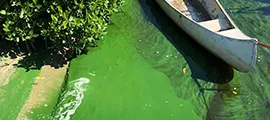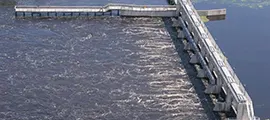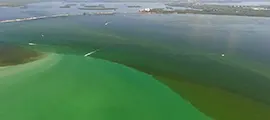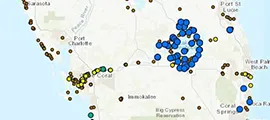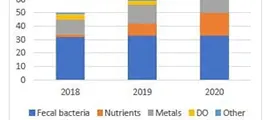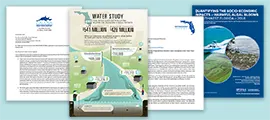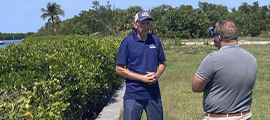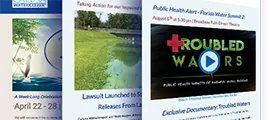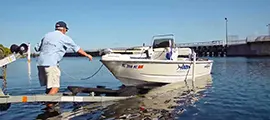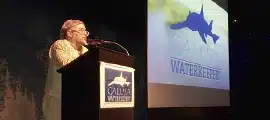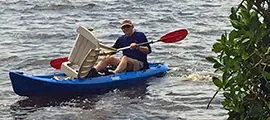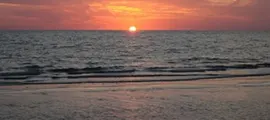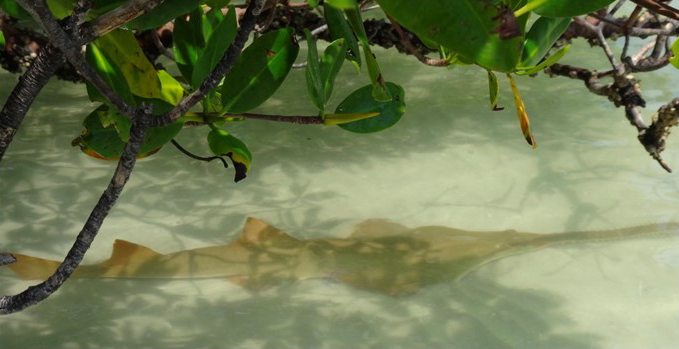Juvenile Smalltooth Sawfish resting underneath red mangrove canopy – Courtesy NOAA
Smalltooth sawfish (Pristis pectinata) are listed as endangered throughout their Atlantic range under the U.S. Endangered Species Act (ESA) and as Critically Endangered on the International Union for the Conservation of Nature (IUCN) Red List. Historically, the species ranged in the US from Texas to North Carolina but now are primarily found only in SW Florida. While sawfish may look similar to sharks, they are actually a type of ray. They have a long, hedge trimmer-like saw extending from their heads called a rostrum. This toothed rostrum functions as a type of fishing tool they use to stun, impale, or pin their fish prey.
The final stronghold for the species lies in Florida between Charlotte Harbor and the Florida Keys. Along with their listing under the ESA, there is federally designated critical habitat in two southwest Florida areas (the Charlotte Harbor Estuary [which includes most of the CR] and the Ten Thousand Island & Everglades region). The Caloosahatchee River (CR) is part of the Charlotte Harbor Estuary and provides vital nursery habitat for smalltooth sawfish, especially throughout the lower, more tidally influenced regions of the river (e.g., Iona Cove and Glovers Bight).
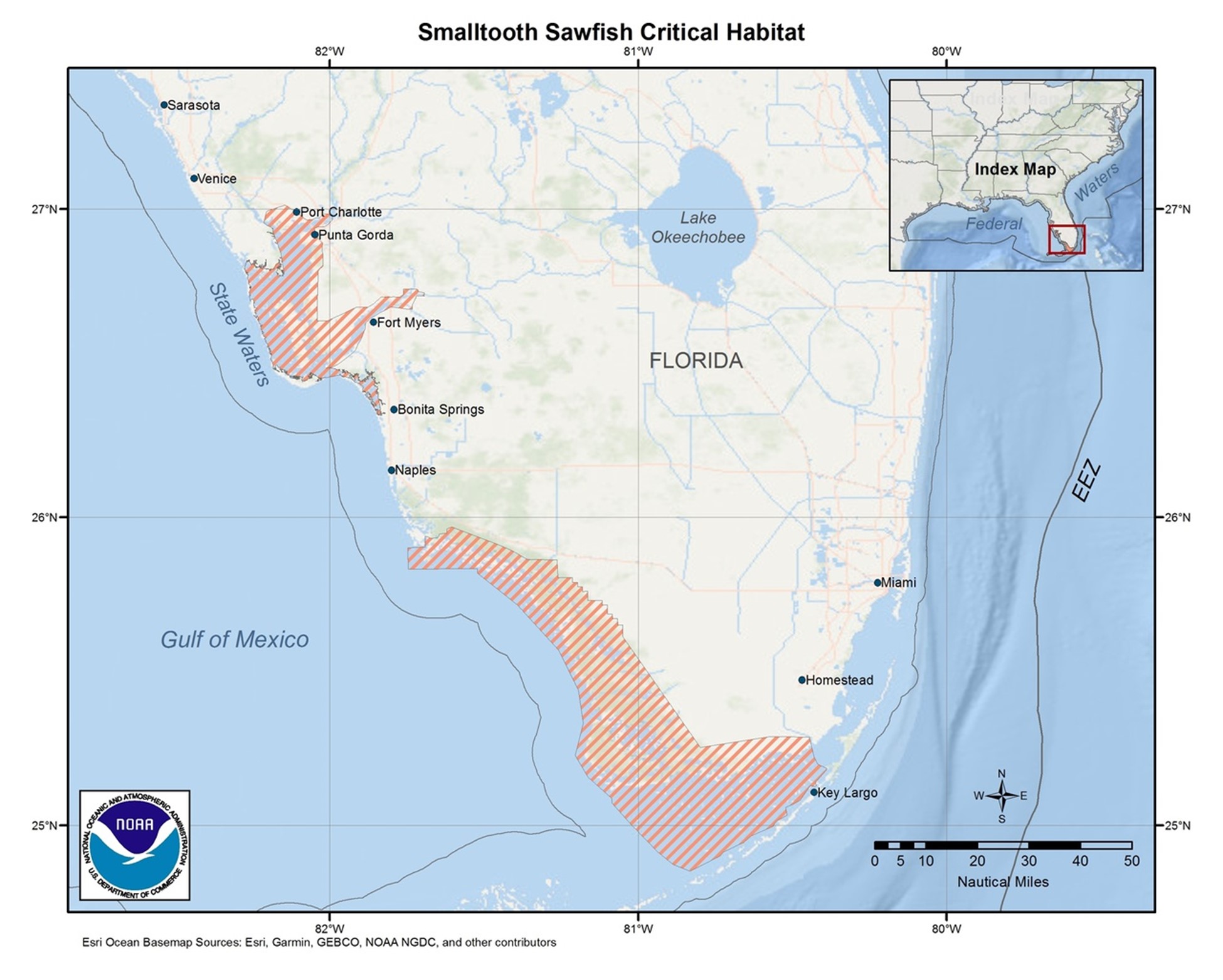
The Two Critical Habitat Units for Smalltooth Sawfish: The Charlotte Harbor Estuary Unit (including Caloosahatchee River, Pine Island Sound and Estero Bay) to the north and the 10,000 Islands and Everglades Unit to the south.
Pupping occurs within the lower CR where mature females briefly return to give live birth to 7–14 pups mostly between March and May. The gestation period is about 12 months and individual females give birth every other year. Sawfish are approximately 2 feet long at birth and double in length over their first year. Males mature at about 7 years old and females about 8 years old when they’ve reached lengths of about 11–12 feet.
There are four high-use, “hotspot” areas within the CR and these are areas where Calusa Waterkeepers (CWK) are actively advocating against development projects (e.g., 7 Islands, Redfish Point, Eden Oak) that would destroy sawfish nursery habitat. The two essential features within the nursery habitat for critical habitat are red mangroves and shallow water < 3 ft deep with wide-ranging salinity. These habitat features are important to sawfish (and many other species such as tarpon, snook, and redfish!) and are threatened by coastal development (e.g., dredging for marinas and shoreline armoring most notably).
The smalltooth sawfish is the center piece of Calusa Waterkeeper’s logo and represents our keystone species for the Caloosahatchee.
After making strides in understanding the species since ESA listing, habitat loss and water quality events have impeded sawfish recovery. Other significant hits to the species came in 2024 and 2025, when reports of large sawfish erratically spinning in circles came in from recreational fishers in the Florida Keys. Just seeing large, bottom-dwelling sawfish in very shallow water was odd enough, but the frantic spinning behavior caught the attention of the entire Keys community and beyond. A massive, multi-agency response followed to ascertain the potential cause.
Summer water temperatures in the Keys (2023) reached hot tub temperatures (102°F) and the following winter the spinning events were first recorded. What followed were 56 recorded sawfish deaths and over 200 discreetly identified individuals showing similar symptoms. In all observed cases, once a sawfish exhibited the spinning, they died, so it is assumed that potential losses from this (Unusual Mortality Event) UME significantly impacted sawfish population numbers.
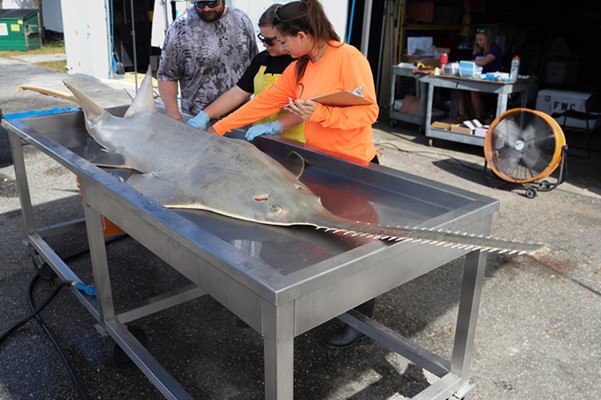
FWC performing necropsy on smalltooth sawfish that died during the “fish spinning” mortality event (2024)
Although still unknown, the likely cause of these UMEs was toxins from harmful algal blooms (HABs). The interaction between record-breaking water temperatures and a lethal cocktail of toxins is what likely adversely impacted a significant portion of the Florida population. With breeding females numbering only in the hundreds, the deaths of even just a few mothers is devastating for this already diminished population. Although sawfish were hardest hit, over 80 fish species were also affected by these events.
The loss of so many reproductive-aged sawfish will almost certainly have a huge impact on the species’ recovery. Many of the sawfish lost in the unusual mortality event would be returning to the CR to pup where the females themselves were born. The pups stay very close to their birthplace for the first 6 months or so and then begin to venture further as they grow, staying in the CR for instance for the first 5-6 years of their lives.
An important component of sawfish population viability stems from females returning to the same nursery sites each reproductive cycle (e.g., Glovers Bight, magnifying the importance of the remaining nursery habitat in the Caloosahatchee River).
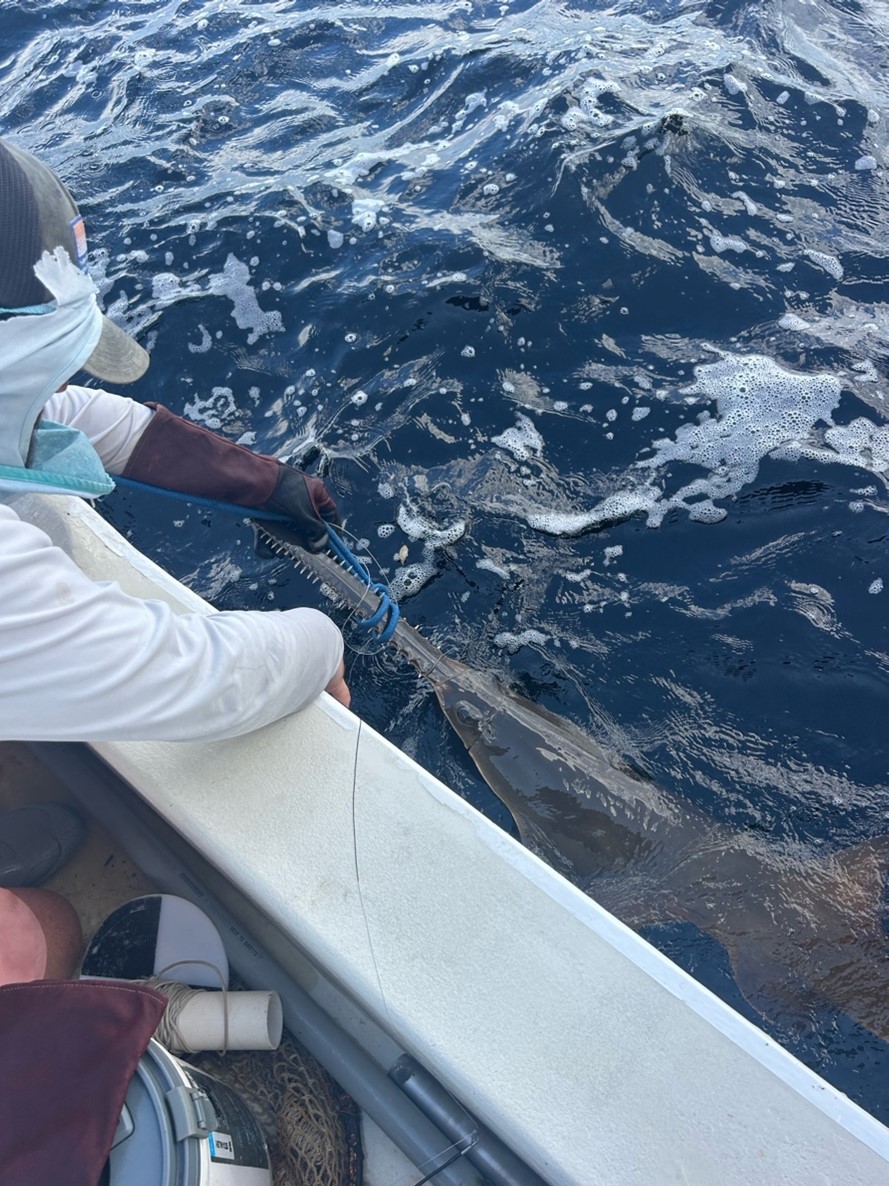
Juvenile female sawfish captured in the Caloosahatchee River by FWC researchers near the Midpoint Bridge awaiting workup including measurements, cutting fishing line entanglement from around the head, parasite removal, and acoustic tagging. Credit: Joe Cavanaugh, Calusa Waterkeeper.
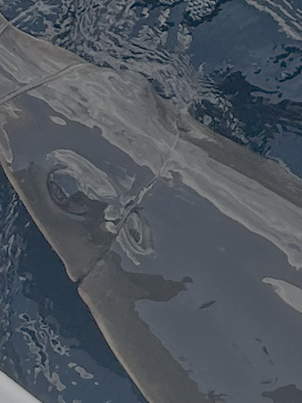
Notice the fishing line entangled and embedded near to the eyes and over the spiracles which are just behind the eyes. Spiracles are used to circulate water through the gills during times of inactivity.
Acoustic Tag with 10-year lifespan used to monitor movements of sawfish in the Caloosahatchee River and elsewhere in Florida.
Since ESA listing (2003), smalltooth sawfish already had a very modest recovery plan (written in 2009) over a 100-year timeframe with important recovery metrics hinging on:
- Minimizing human interaction and associated injury and mortality: This includes reducing bycatch in fisheries (e.g., shrimp trawl and shark bottom-line fisheries)
- Protecting and restoring habitat: The plan includes specific habitat criteria, such as maintaining mangrove nursery habitat.
- Increasing abundance and reoccupying former range: This objective focuses on expanding the sawfish population and its distribution beyond SW Florida.
Several projects in CWK’s advocacy hopper involve properties within sawfish critical habitat. Even if the recent proposed rule to rescind harm under the ESA goes through, the legal protections for these essential features will remain under the sawfish critical habitat rule. Other significant threats to sawfish come from entanglement in fishing line, ball bungie cords (now used widely on boat covers), and other marine debris.
Water quality threats include salinity regime changes (Lake O. discharges, climate change impacts to stormwater runoff), prolonged winter cold snaps, and of course, HABs all pose major threats as mentioned above. Sea level rise will likely inundate and shrink mangrove islands from tidal inundation and where mangroves front seawalls, they will necessarily shrink in range.
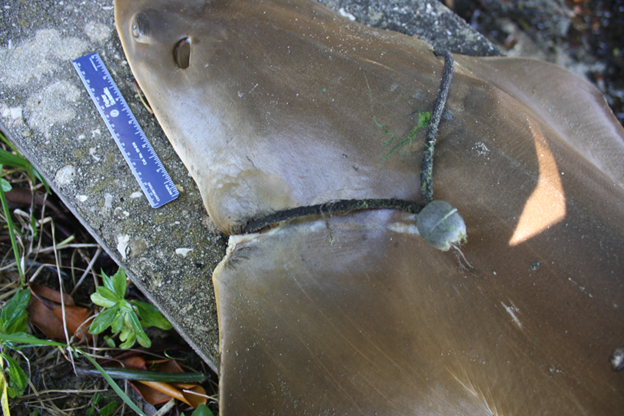
Smalltooth sawfish entangled by a ball bungee cord commonly used to secure boat canopies. Eventually, this would have resulted in a mortality for this sawfish. Credit: Dylan Yakich, FWRI
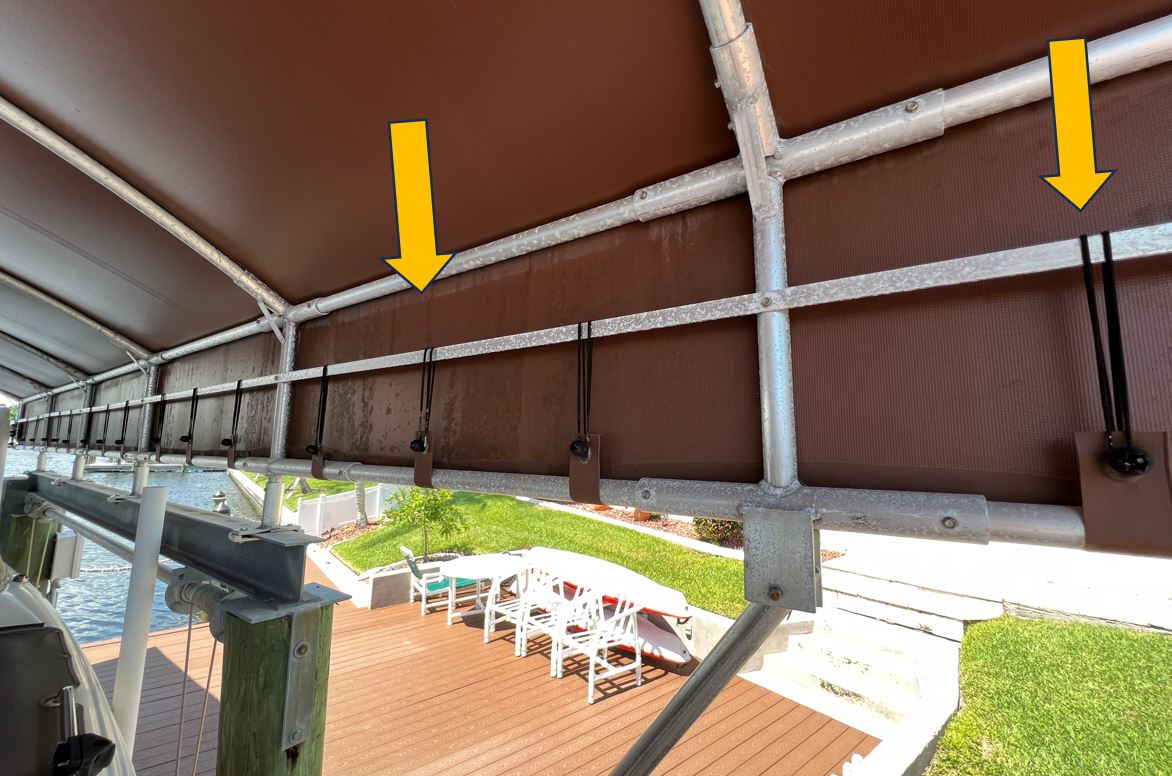
Ball Bungee cords seen in photo securing a vessel canopy (indicated by arrows), courtesy Dr. Gregg Poulakis. Vessel owners should carefully remove ball bungies and canopies as part of tropical storm preparation to reduce risk from entanglement to sawfish.
Overall, this is a pivotal time for sawfish in the CR, and their remaining nursery habitat needs protection from further development that removes their mangrove and shallow-water habitat. Our advocacy initiatives and communities should prioritize sawfish critical habitat areas and leverage protection from developing those areas. The combination of death by a thousand mangrove cuts and removal of adjacent shallow areas to accommodate marinas and navigational channels, for instance, will one day collapse the functionality of these nursery habitats and send the smalltooth sawfish to extinction.
Report All Sawfish Sightings:
All life stages of sawfish can be found in the Caloosahatchee River. Because they are demersal (live on the bottom), they are infrequently seen but are present throughout the tidal Caloosahatchee. Fishers and recreational boaters often see young sawfish in the tidal flats, creeks, mangroves, and even in the residential canals. It’s important to report any sightings to the US Sawfish Recovery Hotline. This statewide survey is a way for anglers, boaters, and beachgoers to help biologists learn more about the areas in which sawfish are sighted. If you catch a sawfish while fishing for other species or happen to see one while you are near the water, please contact the US Sawfish Recovery Hotline.
To report a sawfish sighting:
- E-mail: [email protected]
- Telephone: 844-472-9347 (1-844-4SAWFISH)
To file a report of a sawfish sighting or encounter, please include the date and time of the encounter, the location, the estimated length of each sawfish including the saw, the water depth, and any other relevant details. Thank you for sharing your information!
